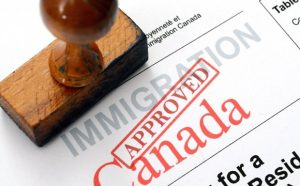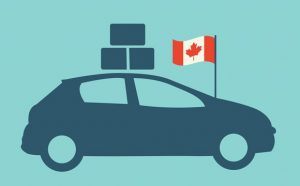Moving to Canada
For the French, Canada has always been a wonderful land of welcome. She arouses admiration, interest both personally and professionally. It’s a bit like living in the American style, but maintaining a culture and our French language, especially if you decide to move to the Quebec or Montreal region. Today, Canada enjoys a strong economy and its attraction is such that it has become the second largest immigration destination in the world after the United States. Indeed, it should also be noted that nearly 30% of the population – or about 9 million inhabitants – is French-speaking. But how do you move to Canada? What are the practical modalities to get there? How to move all your stuff? ADC explains step by step the essential steps for the expatriation process.
Obtaining the visa
The process for you to expatriate and settle in Canada is somewhat complex and relatively lengthy as it can take up to a year to complete. Therefore, it is important to organize yourself in advance to be ready when you need it. 
The first instinct is to get your visa
If you decide to move for the purpose of living in Canada, you must apply for a permanent residence visa. As such, you must provide various administrative documents such as your French diplomas or North American equivalents, a medical examination and an extract from your criminal record. Then, and this only happens in every other case, you must make an appointment with a counselor from the Embassy of Canada in Paris. The administrative fees for this stage are 380 euros for a single person and 860 euros for a family with a child. Note that, here too, the waiting period should be taken into account since it takes an average of 6 months before receiving a response. Your visa application is made online by going directly to the official website of the Canadian government.
The average price of a move to Canada
Moving to Canada costs a certain price. Not only do you have to store some or all of your belongings while waiting for permanent accommodation, but you also need to have them travel by air or sea. A move to North America via a container costs on average between 1,500 and 6,000 euros depending on the transport company.  To go into more details, the price of this move by container is divided as follows::
To go into more details, the price of this move by container is divided as follows::
- The packing of your belongings and furniture: 30% of the total price
- The recovery of your belongings: 30% of the total price
- Transport: 40% of the overall price.
- First tips for a successful move to Canada
- Identify the services of your mover
- The success of your move to Canada depends a lot on the services of the professional with whom you wish to collaborate..
Moving your furniture, your belongings and most of your life to Canada is certainly an important time, but also very stressful. Between the practical preparation of the move (preparation of boxes, administrative changes, etc.), the plane trip, the arrival with the time difference (minimum 6 hours of difference in less), it is not always easy to keep all his ideas clear.
The first thing is to learn about the services and benefits of your mover
Indeed, you are going to entrust him with a part of your material life at least so take the time to check if your expectations will be heard. Do not hesitate to read the comments and reviews online. Finally, contact them directly with your practical questions. At ADC, the response time is short so that everyone has the answers they want and can organize their move abroad in the best possible way.
Write a list of your assets
It may seem tedious at first, but you will quickly find that it is necessary. In this troubling time of moving from one country to another, it’s easy to forget something that can block you once there. Create a sort of table with several columns in which you write down the name of the goods or the type of these, the quantity of said goods and remarks concerning them. Don’t hesitate to add a few photos, especially for your valuables. This listing will become essential, especially if you are moving to Canada via a container.
Number the boxes
Customizing the boxes allows you to quickly find your way around when moving, but also when moving in and taking inventory at your home. The more specific you are about the title of your boxes, the better you will find your way around without wasting time and energy. For example, instead of just writing “Bedroom” or “Kitchen”, specify “Parents bedroom 1/3” or “Library books 2/6”. This way, you know the exact number of boxes intended for each part and you can more easily dispatch the boxes when you arrive.
Take out moving insurance
The move is often a source of hassle and possible losses or disturbances. We strongly recommend that you take out moving insurance. Sure, this will increase your final bill, but it’s better to be safe than sorry, right? With ADC, you can talk freely with one of our advisers. 
A comprehensive checklist for a successful move to Canada
The key to a successful move to Canada is organization. Without going overboard, the more you plan for D-Day, the easier things will go. Before leaving for Canada, don’t hesitate to separate your checklist into two parts. A part is devoted to things to be checked before departure and another part is dedicated to the moment of your arrival in Canada. Print your checklist and gradually tick off each step you have selected.  For what is before the move, it is above all important to gather all your documents. Not only documents related to the immigration process, but also your day-to-day administrative papers such as a copy of your identity papers, etc. In a folder, put together your passport, your family record book, an original birth certificate for each member of your family, any medical records, vaccination records, etc. Do not forget to cancel all your subscriptions in France such as gas, electricity, water utilities, but also Internet, telephony, etc. You also need to define your new tax household, this will prevent you from double taxation. To move around freely, apply for an international driving license. Just contact your prefecture or visit their website to find out what documents to provide. The important thing is to be prepared to meet your needs when you are there. This is why the choice of accommodation on your arrival for the short term is essential. Will you be staying with a friend, or a relative? Or at the hotel? Will you hire? Real estate prices vary from province to province. For example, the average rent in Vancouver is at least 30% more expensive than in Montreal. Remember to educate yourself on the cost of living in Canada so you can plan accordingly. Having enough cash to cover your expenses for the first 6 to 12 months is essential, you never know.
For what is before the move, it is above all important to gather all your documents. Not only documents related to the immigration process, but also your day-to-day administrative papers such as a copy of your identity papers, etc. In a folder, put together your passport, your family record book, an original birth certificate for each member of your family, any medical records, vaccination records, etc. Do not forget to cancel all your subscriptions in France such as gas, electricity, water utilities, but also Internet, telephony, etc. You also need to define your new tax household, this will prevent you from double taxation. To move around freely, apply for an international driving license. Just contact your prefecture or visit their website to find out what documents to provide. The important thing is to be prepared to meet your needs when you are there. This is why the choice of accommodation on your arrival for the short term is essential. Will you be staying with a friend, or a relative? Or at the hotel? Will you hire? Real estate prices vary from province to province. For example, the average rent in Vancouver is at least 30% more expensive than in Montreal. Remember to educate yourself on the cost of living in Canada so you can plan accordingly. Having enough cash to cover your expenses for the first 6 to 12 months is essential, you never know.
The standard of living in Canada and France is quite the same
Be aware, however, that consumer prices are approximately 13% cheaper in Canada. A Canadian has 12% more purchasing power than a Frenchman in France.
Once in Canada
One of the first things to do is apply for your Permanent Resident Card. Know that your 1st immigration to Canada, you will receive the said card at your address. However, if you do not have an arrival address, you must check with Immigration & amp; Citizenship on the Government of Canada site and change your address online. Then, it is essential to receive your NAS number (Social Insurance Number). With this number you can work and receive government services. At the same time, you can apply for a Canadian health insurance card which will help you benefit from free medical care. To do this, contact the ministry of your province directly. Finally, don’t forget to open a bank account in your city in Canada. This will help you with any transfers or currency changes. 
Coming to Canada with your vehicle
If you want to come to Canada with your car, it is essential that it meets Canadian standards (so-called NSVA – Motor Vehicle Safety Standards). This is why most vehicles sold outside of the United States and Canada are often prohibited for import. Concretely, if your vehicle is over 15 years old, you can import it from France. If your car is less than 15 years old, importation may be over 95% banned and you will then have to return it to France or take it to a scrapyard. This unique clause concerns all vehicles, including hybrids and electric vehicles. Each year, nearly 250,000 people emigrate to Canada.  Once you are fully organized and ready for the administrative and material aspects on site, take good care of your choice of mover. ADC knows the little things about moving to Canada. This is why we offer tailor-made services so that your move takes place in the best possible conditions. Calling on a knowledgeable professional like ADC can take a lot of weight off your hands and enjoy your move to Canada a little more, whether temporary or permanent.
Once you are fully organized and ready for the administrative and material aspects on site, take good care of your choice of mover. ADC knows the little things about moving to Canada. This is why we offer tailor-made services so that your move takes place in the best possible conditions. Calling on a knowledgeable professional like ADC can take a lot of weight off your hands and enjoy your move to Canada a little more, whether temporary or permanent.


Recent Comments